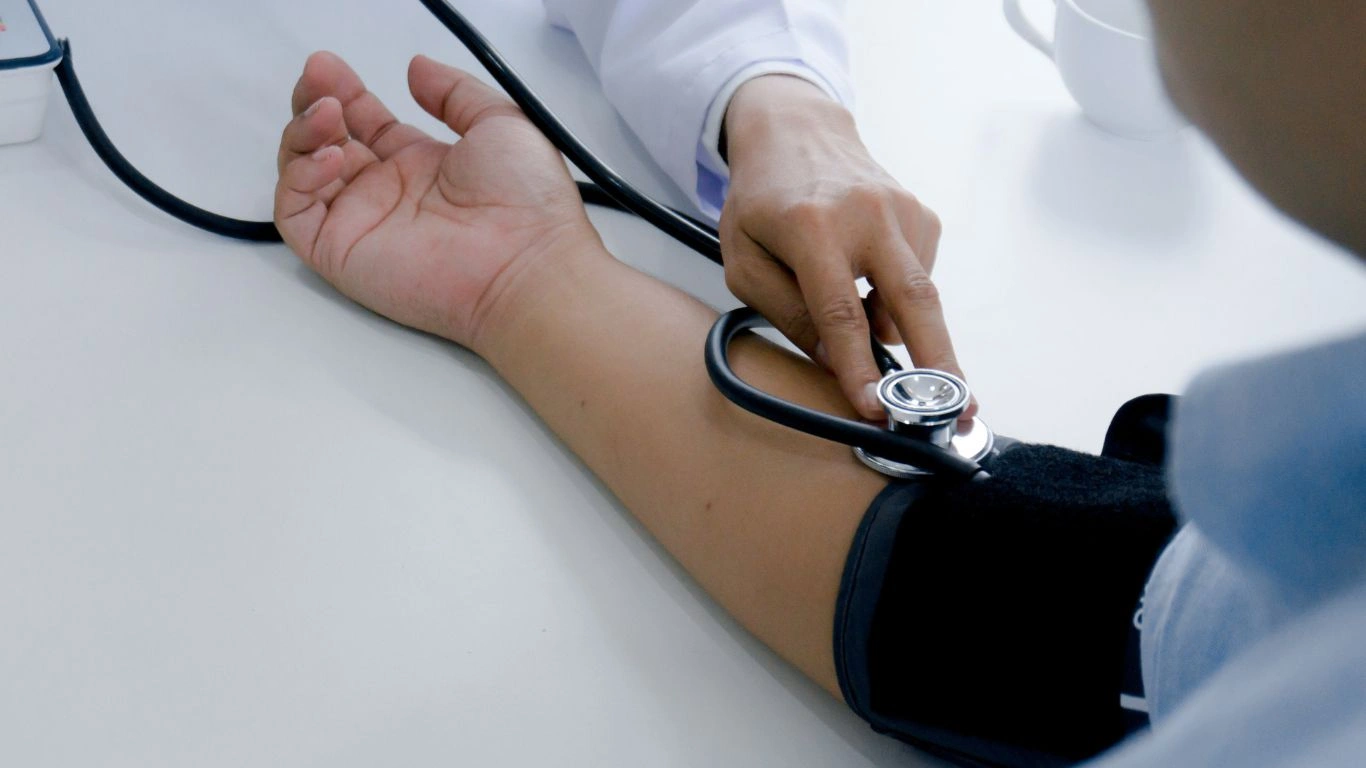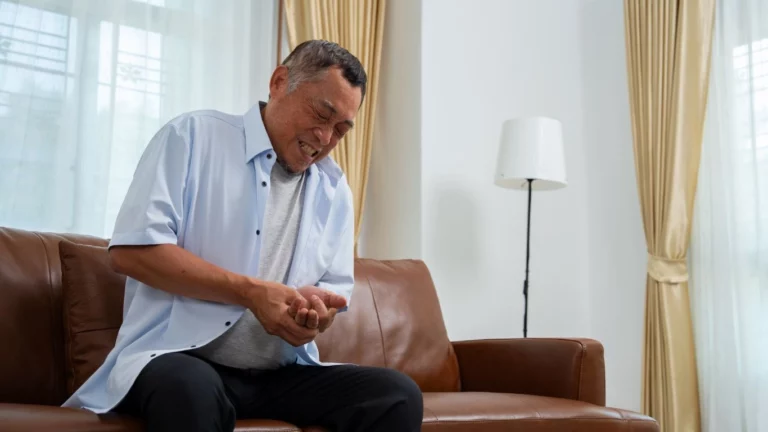How to Manage Blood Pressure When Fasting: Essential Tips for Success
Managing blood pressure while fasting can feel like a tricky balancing act, but it’s not impossible. As an Internal Medicine Physician with a focus on Hypertension Management, I’ve worked with countless patients who’ve had to navigate this challenge. Whether you’re fasting for religious reasons, medical purposes, or as part of a new health regimen, understanding how fasting affects your blood pressure—and how to manage it—is crucial. Blood pressure changes during fasting are not a one-size-fits-all phenomenon; they can vary widely depending on individual health conditions, the length of the fast, and the methods used. In this article, we’re going to talk about how to manage blood pressure when fasting, drawing from my personal experiences and insights to help you maintain a healthy balance. Let’s dive in.
Understanding Blood Pressure and Fasting

Before we get into the practical tips, let’s take a quick moment to break down the relationship between blood pressure and fasting. When we fast, several physiological changes occur in the body. For instance, fasting causes a reduction in the intake of sodium and fluids, which can lead to dehydration. Dehydration, in turn, can cause a drop in blood volume, which might lead to lower blood pressure in some people. On the other hand, certain types of fasting, like intermittent fasting or prolonged fasting, can sometimes trigger an increase in blood pressure as the body tries to compensate for the lack of food intake. This can be particularly problematic for individuals already dealing with hypertension or other heart-related conditions.
How Fasting Affects the Body’s Sodium and Fluid Balance

Our bodies are accustomed to receiving regular meals and fluids. When we fast, especially if we’re skipping meals for several hours or longer, the sodium and fluid balance can become a bit tricky. Normally, sodium helps the body retain water, and fluid balance plays a significant role in maintaining stable blood pressure. However, during fasting, the reduction in fluid intake can cause the blood volume to decrease, leading to a temporary drop in blood pressure, known as orthostatic hypotension. This is when your blood pressure drops suddenly when you stand up, and it can cause dizziness or even fainting.
For some individuals, especially those with a history of hypertension, this reduction in blood pressure can be helpful. For others, the fasting period might trigger compensatory mechanisms in the body that cause the blood pressure to rise. The body’s stress response—driven by cortisol—can also lead to an increase in blood pressure during fasting periods. The key here is that the body is working hard to maintain homeostasis, and this can have different effects depending on your individual health conditions.
Tips for Managing Blood Pressure During Fasting
Now that we’ve got a basic understanding of how blood pressure can fluctuate during fasting, let’s dive into some practical tips for managing it. As someone who has guided many patients through this process, I’ve found that the following strategies are the most effective in maintaining healthy blood pressure levels while fasting.
1. Stay Hydrated

The importance of hydration cannot be overstated, especially when you’re fasting. Even though you’re not eating, it’s still essential to drink enough water to keep your blood volume up and prevent dehydration. When fasting, try to drink water consistently throughout the day, especially during your non-fasting hours. If you’re engaging in longer fasts, like those exceeding 24 hours, it’s even more important to monitor your hydration levels closely.
If plain water isn’t quite doing it for you, you can try adding a pinch of salt to your water or consuming drinks with electrolytes (without added sugars). This can help replace essential minerals and maintain a more balanced fluid-electrolyte state, which is particularly important for blood pressure regulation.
2. Gradual Fasting Approach
Jumping straight into long, extended fasts can shock your body and cause sudden changes in your blood pressure. Instead, consider a gradual approach to fasting. Start by fasting for shorter periods, such as 12-16 hours, and gradually increase the duration as your body adapts. This gives your system time to adjust to the changes in fluid and sodium balance, reducing the likelihood of significant drops or spikes in blood pressure.
If you’re fasting for religious reasons, this is especially important. Your body may not be accustomed to fasting for long periods of time, and easing into it allows for a more comfortable experience with fewer side effects like dizziness, fatigue, or changes in blood pressure.
3. Focus on Nutrient-Dense, Heart-Healthy Meals
When you’re not fasting, it’s crucial to eat meals that are not only nourishing but also supportive of heart health. Opt for foods rich in potassium, magnesium, and fiber—these can help regulate blood pressure and counterbalance the effects of sodium. Think leafy greens, avocados, bananas, and whole grains. You also want to make sure you’re getting enough healthy fats—like those found in fish, nuts, and seeds—which can help maintain a stable blood pressure and keep your cardiovascular system strong.
And don’t forget about protein! While you’re fasting, your body is using protein to repair and build tissues. Consuming lean proteins like chicken, tofu, or beans during your non-fasting periods can help support this process and maintain a steady blood pressure.
4. Monitor Your Blood Pressure Regularly
If you have high blood pressure or a history of hypertension, it’s important to keep a close eye on your blood pressure, especially while fasting. Regular monitoring can help you identify any unusual fluctuations and allow you to take action before the situation becomes more serious. You can easily track your blood pressure at home with a home monitoring kit, and many pharmacies offer blood pressure screenings as well.
Tracking your numbers not only gives you a sense of control, but it can also provide invaluable information to share with your healthcare provider. If you notice significant changes, it’s a good idea to reach out to your doctor for advice on how to adjust your fasting plan or blood pressure medications.
Understanding the Role of Medications in Fasting
As an Internal Medicine Physician specializing in hypertension, one thing I’ve noticed is that medications play a huge role in how blood pressure behaves during fasting. If you’re on medications to control hypertension, it’s essential to understand how fasting may alter their effects. Certain medications might need to be adjusted during periods of fasting to avoid unwanted fluctuations in blood pressure. In this section, we’ll discuss some of the most common classes of hypertension medications and how they interact with fasting.
1. Diuretics: The Fluid-Focused Medication

Diuretics are often prescribed to help your kidneys get rid of excess salt and water, reducing blood volume and lowering blood pressure. While diuretics are generally effective in managing hypertension, they can present a challenge during fasting, as they can exacerbate dehydration—especially if you’re not drinking enough water.
If you’re fasting and on diuretics, it’s essential to stay even more vigilant about hydration. Dehydration can cause a drop in blood pressure, leading to symptoms like dizziness or fainting. If you’re fasting for long periods, it might be worth discussing with your doctor whether adjusting the dosage or switching to a different medication could be more suitable for your fasting routine.
2. ACE Inhibitors and ARBs: Keeping Blood Pressure in Check
Angiotensin-Converting Enzyme (ACE) inhibitors and Angiotensin Receptor Blockers (ARBs) are common medications used to treat high blood pressure by relaxing blood vessels and reducing the workload on the heart. These medications work well, and most people tolerate them pretty well during fasting, but they can sometimes cause low blood pressure when you’re dehydrated.
If you’re fasting, especially if you’re limiting your fluid intake, these medications can enhance the effects of dehydration, leading to a potential drop in blood pressure. That said, the key to managing this is keeping track of how your body is responding and staying hydrated. In my experience, people on ACE inhibitors or ARBs usually do well with hydration and don’t typically need adjustments to their medications unless they experience symptoms like lightheadedness.
3. Beta-Blockers: Monitor for Sudden Drops
Beta-blockers work by slowing down your heart rate and reducing the force of the heart’s contractions, which helps lower blood pressure. However, they can sometimes cause blood pressure to dip too low, especially if you’re already in a calorie deficit or dehydrated while fasting.
If you’re on a beta-blocker and fasting, you may need to pay extra attention to how you feel, particularly when you stand up quickly or engage in physical activity. One thing I always tell my patients is to avoid overly intense exercise while fasting if they’re on beta-blockers, as the combination of low energy intake and a slower heart rate could cause a significant drop in blood pressure.
Fasting and Blood Pressure Variability: What’s Normal?
Another common question I get from patients is about what kind of blood pressure variability is normal when fasting. Blood pressure can fluctuate for many reasons, and fasting is just one of them. It’s important to remember that fluctuations are natural and expected during periods of fasting, but significant swings—either high or low—should be taken seriously.
1. Temporary Blood Pressure Drops
It’s not unusual for some individuals to experience a temporary drop in blood pressure during the early phases of fasting. This usually happens because the body is adjusting to the lack of food intake, leading to a decrease in blood volume and, consequently, a decrease in blood pressure. Some of my patients have described this feeling as lightheadedness or even dizziness when they stand up too quickly.
However, these drops should be short-lived. The body typically adapts within a few days as it begins to conserve fluid and electrolytes. If you’re fasting and you’re experiencing persistent or severe drops in blood pressure, it may be a sign that something isn’t quite right, and you should reach out to your healthcare provider.
2. Increased Blood Pressure During Prolonged Fasting
On the flip side, some individuals may notice an increase in blood pressure during longer fasting periods. This can happen because the body perceives the lack of food as a stressor, which activates the release of cortisol, the body’s stress hormone. Cortisol can lead to vasoconstriction (narrowing of the blood vessels), which can raise blood pressure.
Interestingly, while cortisol may temporarily increase blood pressure, prolonged fasting might actually lower blood pressure over time. It’s a process that’s a bit complex, and the changes depend on how your body responds to fasting. If you’re noticing a persistent rise in blood pressure, especially during extended fasting, it’s a good idea to consult your doctor to ensure your body is handling the fast as it should.
The Role of Physical Activity While Fasting
Another factor to consider when managing blood pressure while fasting is physical activity. Exercise can be a great tool to help regulate blood pressure, but when you’re fasting, your body’s response to exercise can be different than when you’re eating regularly. It’s important to tailor your workout routine to match your fasting schedule to prevent unnecessary strain on your body and keep your blood pressure in check.
1. Adjusting Exercise Intensity
If you’re fasting, especially during longer fasts, you might want to adjust the intensity of your workouts. While light to moderate exercise, like walking or gentle yoga, is usually safe and beneficial during fasting, high-intensity workouts can put too much strain on your body, especially if you’re already in a calorie deficit.
In my practice, I often recommend that patients who are fasting stick to low-impact exercises or focus on flexibility and mobility exercises during fasting hours. If you’re an avid runner or strength trainer, it might be wise to scale back the intensity or shift your workouts to the eating periods of your fast. High-intensity exercises during fasting can sometimes lead to a drop in blood sugar or blood pressure, leaving you feeling fatigued or dizzy.
2. Listen to Your Body
As always, listening to your body is key. If you’re fasting and you notice that exercise is making you feel overly fatigued or causing dizziness, it’s a sign that you might need to tweak your fasting plan or your physical activity routine. Maintaining a balance is crucial—whether it’s hydration, nutrition, or exercise, it’s all about finding what works best for you during your fasting journey.
When to Be Concerned: Red Flags During Fasting

Fasting, when done thoughtfully, can offer numerous benefits—but it’s not without its pitfalls, especially for those managing hypertension. Over the years, I’ve seen patients push through symptoms that really should have been red flags. Sometimes we brush things off because we assume they’re “normal fasting side effects,” but it’s important to recognize when something isn’t right.
If you’re wondering how to manage blood pressure when fasting, it’s not just about prevention—it’s about knowing when to take action. Here are a few symptoms that should prompt you to pause and possibly re-evaluate your fasting plan:
- Persistent dizziness or lightheadedness, especially when standing up
- Heart palpitations or a racing heart without physical exertion
- Blurred vision or headaches that don’t resolve with hydration
- Extreme fatigue or feeling “out of it” mentally
- Chest pain or shortness of breath
If any of these symptoms appear during a fasting period—especially if they’re recurring—don’t try to tough it out. I always tell my patients: your health is not a test of willpower. It’s absolutely okay to modify or even stop a fast if it’s not serving your health goals.
Personalizing Your Fasting Plan for Blood Pressure Control
There’s no such thing as a universal fasting blueprint—especially when we’re talking about something as nuanced as blood pressure. That’s why personalization is so important. Your age, existing medical conditions, lifestyle, and even your environment all factor into how your body will respond to fasting.
1. Consider the Type of Fast
Not all fasts are created equal. Some folks do well with intermittent fasting—say, an eating window of 8 hours followed by a 16-hour fast—while others might prefer alternate-day fasting or even periodic prolonged fasts. From a hypertension standpoint, I usually recommend intermittent fasting for beginners. It’s gentler on the body and gives you the flexibility to adapt without major blood pressure swings.
More intense fasts, like 48- or 72-hour water fasts, should be approached cautiously, and definitely under medical supervision if you’re on antihypertensive meds. I’ve had patients who were doing everything “right,” but their blood pressure plummeted on day two of a long fast simply because they weren’t replenishing electrolytes or monitoring their BP closely.
2. Incorporate Break Days or Refeeds

Incorporating “refeed” days—where you break your fast with balanced meals—can help reset the body and reduce the risk of blood pressure dips. On these days, focus on nutrient-dense foods that are naturally supportive of heart health. Think magnesium-rich greens, potassium-loaded fruits, whole grains, and lean proteins. These foods help support vascular tone and electrolyte balance, especially if you’ve been in a calorie or hydration deficit.
In clinical practice, I’ve seen refeed days make a massive difference for patients who struggle with blood pressure lability during fasting. You don’t need to undo all your progress—just give your system a bit of a break.
3. Track Patterns and Adjust as Needed
One of the most underrated tools in hypertension management while fasting? A simple journal. Or, if you’re more tech-savvy, a blood pressure tracking app. Recording your blood pressure readings, hydration levels, sleep patterns, and how you feel physically and mentally can offer some major insights over time.
I had a patient who realized her pressure always dipped below normal around hour 20 of her fast. By shortening her fasting window and hydrating better, she was able to stay in a safe range while still reaping the benefits. No guessing, just data-driven adjustment. It’s all about recognizing your body’s signals.
Supplements That May Support Blood Pressure While Fasting
While food and hydration are key players, sometimes a little supplement support can go a long way. But let me preface this: always talk to your doctor before adding anything new to your regimen—especially if you’re on medications.
Helpful Add-Ons (If Approved by Your Doc)
- Magnesium: Supports vascular health and helps regulate muscle and nerve function.
- Potassium (from food sources ideally): Essential for balancing sodium levels and maintaining stable BP.
- Omega-3s: Anti-inflammatory and can help improve endothelial function.
- CoQ10: Antioxidant that may help support heart health and lower blood pressure in some individuals.
I’ve had several patients who benefited from magnesium supplementation during fasting—it helped with sleep, reduced muscle cramps, and even stabilized their blood pressure better overnight. But again, it all comes down to individualized care.
Final Thoughts: Building a Sustainable Fasting Routine

Let’s be real—fasting isn’t some magic fix-all, but when done mindfully, it can absolutely be part of a sustainable blood pressure management strategy. The key is consistency, personalization, and staying tuned in to your body’s signals. As someone who has walked this path alongside many patients, I can tell you that small, consistent actions are what move the needle in the long run.
And here’s a little secret I often share with my patients: the goal isn’t just “lower blood pressure.” The goal is to feel stronger, clearer, and more in control of your health. Fasting can be one of the tools in that journey—just make sure it’s serving you, not stressing you out or making you feel worse.
References
Disclaimer
This article is intended for informational purposes only and should not be considered medical advice. Always consult with a qualified healthcare provider before making any changes to your diet, medications, or fasting routines, especially if you have pre-existing conditions such as hypertension or are on prescription medications.

Dr. Gwenna Aazee is a board-certified Internal Medicine Physician with a special focus on hypertension management, chronic disease prevention, and patient education. With years of experience in both clinical practice and medical writing, she’s passionate about turning evidence-based medicine into accessible, actionable advice. Through her work at Healthusias.com, Dr. Aazee empowers readers to take charge of their health with confidence and clarity. Off the clock, she enjoys deep dives into nutrition research, long walks with her rescue pup, and simplifying medical jargon one article at a time.






